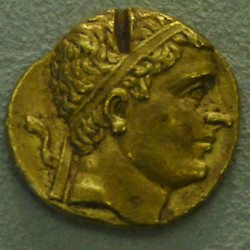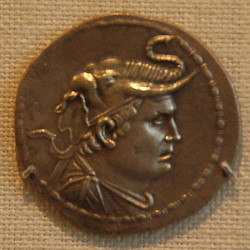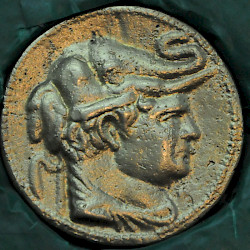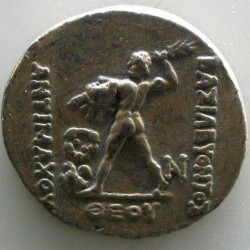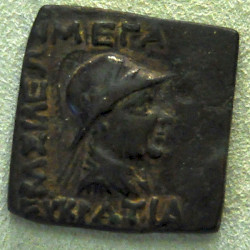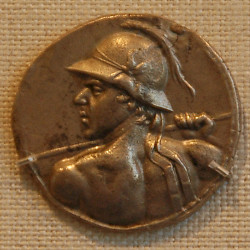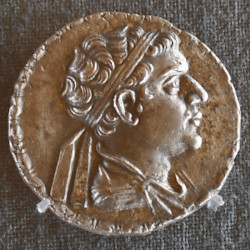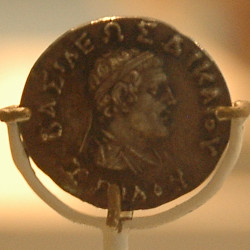Bactria
Q132646Bactria (Old Persian: Bâkhtriš): country in northern Afghanistan, in Antiquity famous for its fierce warriors and its ancient religion, which was founded by the prophet Zarathustra.
Prehistory
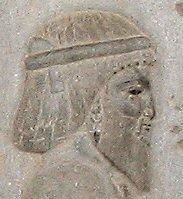
If there was ever a region that can be described with the old geographical cliché that it is a country of opposites, it must be Bactria. Situated between the Hindu Kush mountain range in the south and the river Oxus (Amudar'ya) in the north, it is essentially an east-west zone that consists of extremely fertile alluvial plains, a hot desert, and cold mountains. The contrast between the country's fertility and desolation was already noted in Antiquity (e.g., by the Roman author Quintus Curtius Rufusnote). The presence of all types of landscape helps to explain why agriculture and urbanism started early in Bactria.
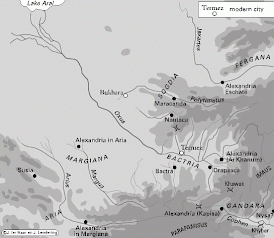
The Hindu Kush, which marks the fault line of the Iranian and Eurasian tectonic plates, runs more or less from the east to the west, and many small rivers run down from its slopes to the north, depositing sediments on the foothills and the plain that runs parallel to the mountain range. Consequently, this is a very fertile area, where farmers produced wheat and barley in very ancient times. Their culture, known as the Bactria-Margiana Archaeological Complex (BMAC), can be dated to c.2200-1700 and is sometimes associated with the arrival of the Indo-Iranians.
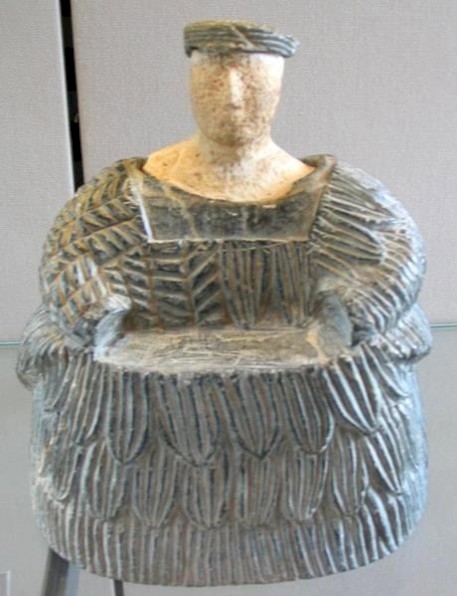
Once, there had been a semi-arid zone between the fertile area and the river. Some of the mountain streams, however, had reached the river Oxus, and had formed lush corridors through the steppe. When the farmers started to dig canals to irrigate fields immediately north of the foothills, however, the waters disappeared from the arid zone and it changed into a desert.
So, after 2000 BCE, several parallel zones can be discerned:
- the Hindu Kush mountains in the south;
- the foothills and the fertile agricultural zone;
- the desert;
- the river Oxus.
North of the river was the steppe, which was occupied by Sogdians, with whom the Bactrians must have exchanged products.
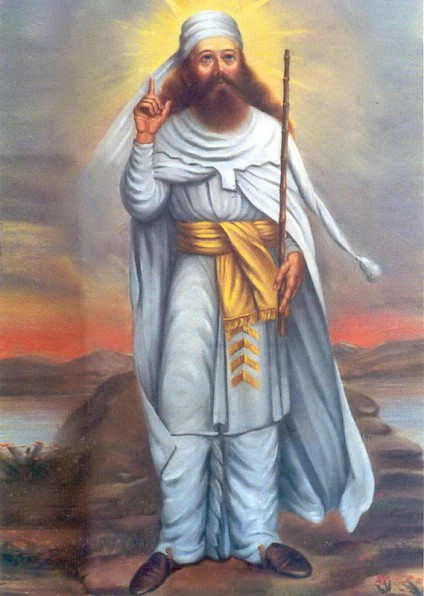
According to some scholars, the Bactrian prophet Zarathustra lived in the second half of the second millennium. He is the founder of Zoroastrianism and reformed aspects of an older religion. Archaeologists have tried to see traces of this older religion in the BMAC, but decisive proof is lacking. Besides, it must be noted that there are scholars who date Zarathustra in the mid-first millennium, which makes it very implausible that there is continuity from the BMAC to Zoroastrianism.
Achaemenid Age
When we leave the age of legend and enter the historical age, in which we have written sources, Bactria is part of the Persian or Achaemenid Empire. It is mentioned for the first time in the Behistun inscription, written in c.520 BCE, and must have been part of the Persian realms before that. According to the Greek researcher Herodotus of Halicarnassus, the founder of the Achaemenid Empire, Cyrus the Great, conquered Lydia and continued "with his mind on Babylon and the Bactrians and the Sacae and the Egyptians."note
It may well be true that Cyrus conquered Bactria, because he was killed in action during a campaign against the Ma-Sacae ("Moon Sacae", Massagetes), which lived -seen from Persis- beyond Bactria. Alternatively, Bactria may have belonged to the countries that Cyrus took over when he subdued the Medians.
However this may be, Bactria was incorporated in the Achaemenid empire as a special satrapy that was sometimes ruled by the crown prince or intended heir (mathišta). The country north of the Oxus, Sogdia, was at times part of this satrapy. The capital of Bactria was Bactra (Balkh, near modern Mazâr-e Sharîf), an important city in the history of Zoroastrianism. It is known to have had a sanctuary dedicated to the goddess of water and fertility Anahita, and is called "the town with the high-lifted banners" in the Avesta, the sacred book of the Zoroastrians.
When Darius I the Great reorganized the Persian empire and created formal satrapies, the Bactrians and the otherwise unknown Aeglians were reckoned to be one tax district, which was supposed to pay 360 talents every year. The Bactrian warriors were famous: they are known to have been part of the army of Darius' son and successor Xerxes, who invaded Greece in 480. Herodotus mentions their turbans, bows, and spears,note and tells that they were employed during the battle of Plataea in 479.note
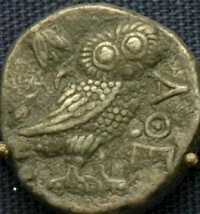
The Greeks knew no nation beyond Bactria. When the Athenian playwright Euripides wanted to write that the god Dionysus was born in the far east, he called it Bactria, and the philosopher Aristotle of Stagira argued that from the Hindu Kush, one could see the eastern Ocean. The Greeks, however, would probably never have heard of the Bactrians if king Darius I the Great had not decided to deport a group of Greeks from the Cyrenaica to Bactra. From coins, it can be deduced that these exiles managed to keep in touch with the motherland. Another group of Greek settlers was called the "Branchidae" and descended from a group of priests that had once lived near Didyma (near Miletus) and had been taken captive by the Persians.
Alexander
In 329, the Macedonian conqueror Alexander the Great arrived in Bactria, after a heroic crossing of the Hindu Kush. His opponent, the Persian leader Artaxerxes V Bessus, had expected an invasion from Aria in the west, and had destroyed the countryside, but Alexander arrived from the southeast. He captured Bactra, passed through the desert (text) and crossed the river Oxus. For the Iranian tribesmen in Bactria and Sogdia, the shock was too much, and their leader Spitamenes arrested Bessus, who was handed over to Alexander's colonel Ptolemy.
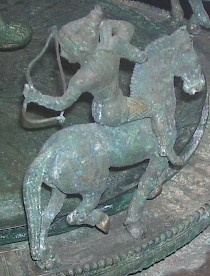
However, the Macedonian occupation of Sogdia and Bactria was not to be uncontested. Almost immediately after Alexander had decided to build a new city, called Alexandria Eschatê, "the furthest Alexandria" (modern Khodzent), the Sogdians revolted, because they did not like urban settlements in their nomadic country. Another reason for this revolt was Zoroastrianism: the Zoroastrians did not want to soil the sacred earth or fire with dead corpses, and therefore exposed their dead to the vultures and dogs. The Macedonians were shocked and Alexander forbade this custom. Another cause may have been cattle raiding. It is impossible that the invading army did not confiscate cows - the only sin that was condemned explicitly in the Zoroastrian creed. All this was unacceptable to the Sogdians, and Spitamenes became their leader.
Many Bactrians sympathized with the insurrection, and Spitamenes knew how to exploit this. His mounted archers came dangerously close to the walls of Bactra. However, the Macedonians were able to overcome the revolt. Alexander's friend Hephaestion founded several new cities (including Kampyr Tepe and, perhaps, Ai Khanum). In the spring of 327, Bactria was more quiet, and Alexander married a native princess named Roxane to create more sympathy. Many Greek mercenaries - perhaps 30,000 men - were left behind as an occupation force when the Macedonian army crossed the Hindu Kush to invade the Punjab.
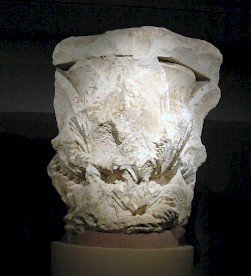
When Alexander was almost mortally wounded during the siege of the city of the Indian Mallians (early in 325), the Greek settlers in Sogdia and Bactria revolted and decided to march home. They were supported by the native population, who wanted to get rid of their new masters, leave the cities, and take up their old way of life. Order was restored, but a new insurrection in the summer of 323 (after the death of Alexander) was never really suppressed, although Alexander's successor Perdiccas had sent an army commanded by Peithon (text).
Hellenistic Age
Peithon had wanted to save the Greek settlers, but they were killed by his army. From now on, there were insufficient Europeans to keep Bactria occupied. At the same time, war broke out between Perdiccas and several of Alexander's commanders, and it was only in 308, after Seleucus I Nicator had won the Babylonian War, that a new European army could invade Bactria again. From now on, Bactria belonged to the Seleucid Empire, and Seleucus' son and successor Antiochus I Soter was for some time governor of the eastern satrapies, as if he were an Achaemenid mathišta.
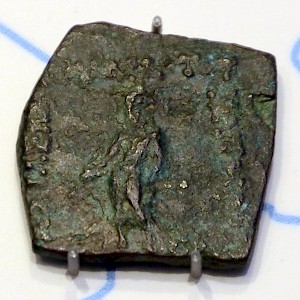
In 245, a satrap of Parthia (west of Bactria) named Andragoras, revolted from the young king Seleucus II Callinicus, who had just succeeded to the throne. In the confusion, Parthia was overrun by the Parni, a nomad tribe from the Central-Asian steppe. A Seleucid counter-offensive ended in disaster, and Hyrcania was also subdued by the Parni, who founded the Parthian Empire.
The Greeks and Macedonian living in Bactria were now cut off from the European west. They became an independent kingdom, led by a man named Diodotus, who had already supported the Parni. Although the Seleucid king Antiochus III the Great invaded Parthia and Bactria in 206, the Bactrians were able to retain their independence. King Euthydemus appears to have been a powerful man. In 184, the Graeco-Bactrian kingdom seized Gandara and the Punjab, where the power of the Indian Maurya dynasty was in decline. Euthydemus' son Demetrius I settled in Taxila, which he refounded as a Greek city (Sirkap).
Sacae and Kushans
In c.130 BCE, the Graeco-Bactrian kingdom came to an end: the nomads from the north, who had often made incursions, broke through, and in 110, they were also present in India. There were many small kingdoms, which have produced a remarkable variety of coins.
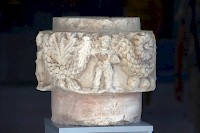
In the first century CE, the Yuezhi nomads or Kushans reunited Bactria and the Punjab. From their capital Peshawar in Gandara, the new kings ruled a powerful Buddhist empire, in which Indian, Iranian, Sacan, Parthian, and Greek elements were integrated. The Silk road connected Bactria with the Roman Empire in the west and China in the far east. In this period, Buddhism spread to the Bactria. Monasteries have been excavated in a/o Fayaz Tepe and Kara Tepe (both near Termez in Uzbekistan). Early Buddhist art had distinct Greek features.
The famous Bamiyan Buddhas that were destroyed by the Taliban in March 2001, were erected in this period -between 200 and 400 CE- by descendants of Greek artists who had come to Bactria with Alexander the Great.
